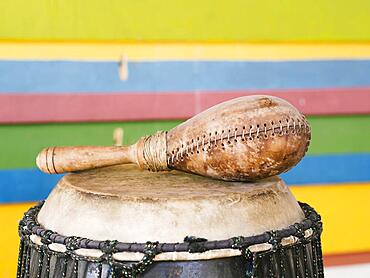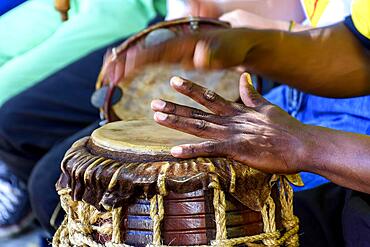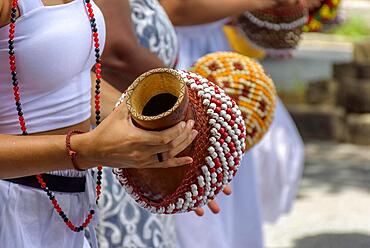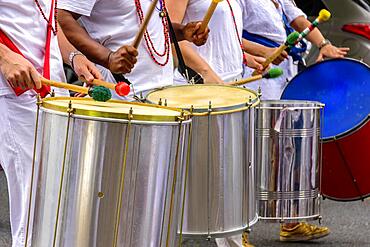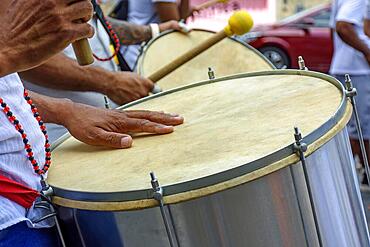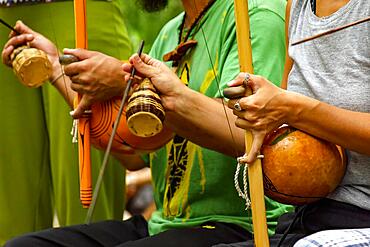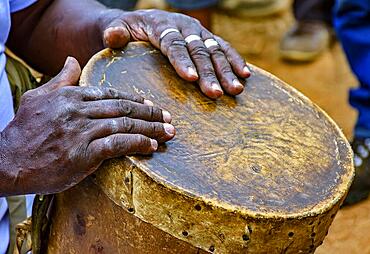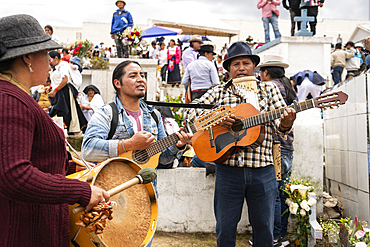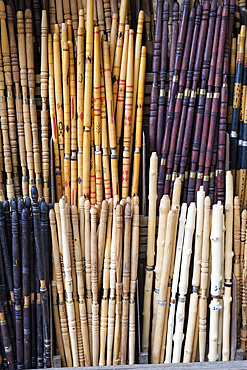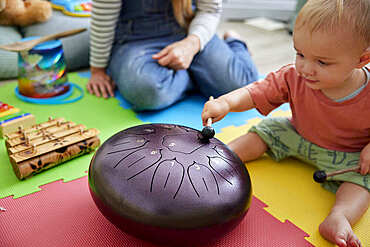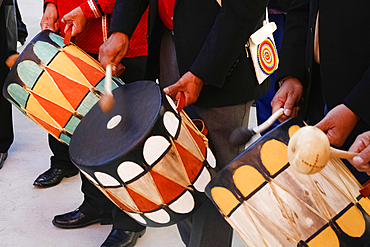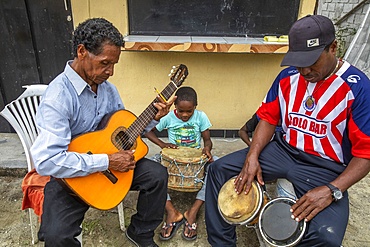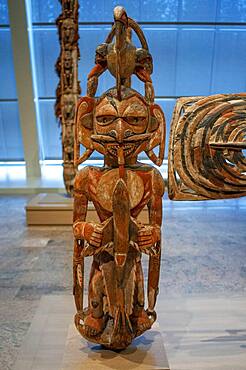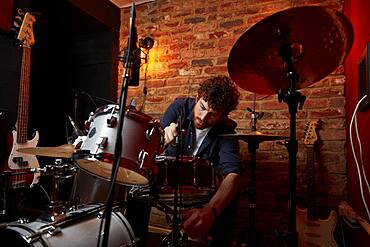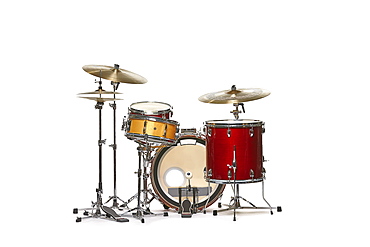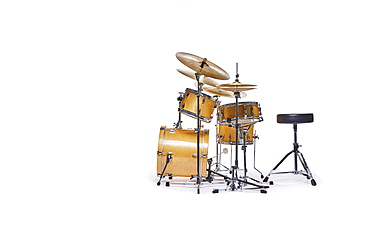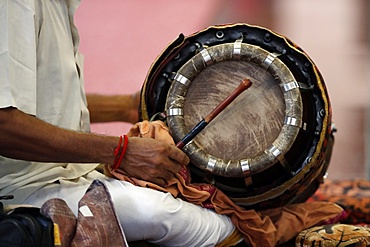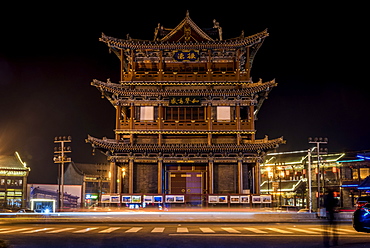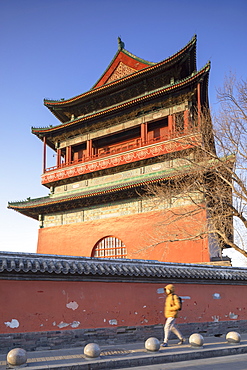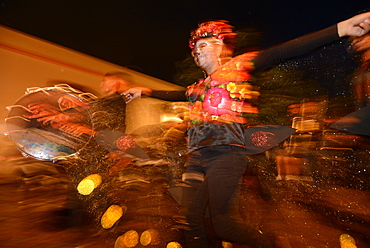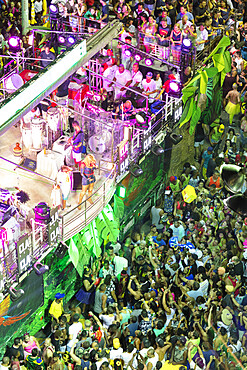Recent searches
Loading...
1372-230 - Streets of Bhaktapur old town. Traditional Drum band with bronze drums celebrating
832-403136 - Percussion instruments with colorful wall
1184-8712 - Man explaining the history of the Lamido Palace, Ngaoundere, Adamawa region, Northern Cameroon, Africa
1184-8706 - Man explaining the history of the Lamido Palace, Ngaoundere, Adamawa region, Northern Cameroon, Africa
1184-8638 - Men dancing at a tribal festival, Southern Chad, Africa
832-400214 - Dum player and other instrumentalists during a Brazilian samba performance at the carnival, Brasil
832-400213 - Percussionist playing a rustic and rudimentary percursion instrument atabaque during afro-brazilian cultural manifestation, Brasil
832-400212 - Musician playing a rudimentary percursion instrument called atabaque during afro-brazilian capoeira cultural manifestation, Brasil
832-400211 - Ethnic drums also called atabaques on the streets of Pelourinho, the historic center of the city of Salvador in Bahia, Brasil
832-400209 - Ethnic drums also called atabaques on the streets of Pelourinho, the historic center of the city of Salvador in Bahia, Brasil
832-400189 - Woman playing a type of rattle called xereque of African origin used in the streets of Brazil during samba performances at carnival, Brasil
832-400187 - Metal rattle during street carnival festivities in Brazil, Brasil
832-400188 - Several drummers with their musical instruments in the Carnival celebrations in the streets of Brazil, Brasil
832-400186 - Drummer playing his instrument during carnival celebrations in the streets of Brazil, Brasil
832-400185 - Musicians playing an Afro Brazilian percussion musical instrument called a berimbau during a capoeira performance in the streets of Brazil, Brasil
832-400169 - Percussionist playing a rudimentary atabaque during afro-brazilian cultural manifestation, Rio de Janeiro, Rio de Janeiro, Brasil
832-400166 - Brazilian samba performance with musician playing tambourine in the streets of Pelourinho, city of Salvador, Bahia, Brasil
848-2659 - Dia de los Muertos (Day of the Dead) celebrations at Otavalo Cemetery, Imbabura, Ecuador, South America
832-398410 - Glass of whiskey with ice on wooden table with bottle and barrel on background
809-8613 - Sri Krishnan Hindu temple, musician playing a Thavil, a traditional Indian drum, Hindu ceremony, Singapore, Southeast Asia, Asia
1178-44074 - Fes Morocco Traditional musical instruments for sale at a music shop in the medina
1174-11353 - Toddler playing with musical instrument in playroom with mother sitting nearby
1174-11354 - Toddler and teddy bear playing bongo drum together at home
832-398144 - French Bulldog dog with blue neckerchief lying down between wooden industrial cable drums
832-397077 - Gong in Lamayuru Gompa (Tibetan Buddhist monastery) . Ladakh, India, Asia
746-91481 - A Shaman recounting the myth. Folk Festival commemorating the origin myth the Tien Shan Maral (Tian Shan wapiti), an origin myth of the Kyrgyz tribes. Near Tasch Baschat, Naryn region. Asia, Central Aisa, Kyrgyzstan
746-91480 - A Shaman recounting the myth. Folk Festival commemorating the origin myth the Tien Shan Maral (Tian Shan wapiti), an origin myth of the Kyrgyz tribes. Near Tasch Baschat, Naryn region. Asia, Central Aisa, Kyrgyzstan
746-91483 - A Shaman recounting the myth. Folk Festival commemorating the origin myth the Tien Shan Maral (Tian Shan wapiti), an origin myth of the Kyrgyz tribes. Near Tasch Baschat, Naryn region. Asia, Central Aisa, Kyrgyzstan
746-91482 - A Shaman recounting the myth. Folk Festival commemorating the origin myth the Tien Shan Maral (Tian Shan wapiti), an origin myth of the Kyrgyz tribes. Near Tasch Baschat, Naryn region. Asia, Central Aisa, Kyrgyzstan
1350-6295 - Drummer welcoming visitors to Misminay village; Sacred Vally, Peru.
1178-41585 - Caucasian mother and baby son playing with toys on floor
1178-39129 - Teacher and girls playing bongos and tambourines in classroom
832-394745 - Local drums of the Otuho or Lutoko tribe in a village in the Imatong mountains, Eastern Equatoria, South Sudan, Africa
832-394741 - Local drums of the Otuho or Lutoko tribe in a village in the Imatong mountains, Eastern Equatoria, South Sudan, Africa
1178-38148 - Caucasian brother and sister sitting on brick wall with toys
1350-4041 - A young Yao boy beats a traditional drum before a cultural performance in Huangluo, China.
1350-4040 - A young Yao boy beats a traditional drum before a cultural performance in Huangluo, China.
809-8338 - Afro-Ecuadorian musicians in Valle del Chota, Ecuador, South America
809-8337 - Afro-Ecuadorian group playing bomba and dancing in Valle del Chota, Ecuador, South America
1350-2664 - Gnawa musicians playing music in Khamilia
1350-2688 - Verges, a small town in the Northeast of Catalonia (Spain), during Easter celebrates the Procession of Verges with skeletons dancing on the sound of a drum, Roman soldiers, known as the 'Manages', and a representation of the life and crucifixion of Jesus Christ. The Procession features the Dance of Death, a tradition from the Middle Age associated with epidemics and plagues and the only one remaining in Spain Ten skeletons dance to the beat of a drum to remember that no one is exempt of death. The backdrop of the medieval walls and towers of Verges is key to this macabre staging.
1350-2693 - Verges, a small town in the Northeast of Catalonia (Spain), during Easter celebrates the Procession of Verges with skeletons dancing on the sound of a drum, Roman soldiers, known as the 'Manages', and a representation of the life and crucifixion of Jesus Christ. The Procession features the Dance of Death, a tradition from the Middle Age associated with epidemics and plagues and the only one remaining in Spain Ten skeletons dance to the beat of a drum to remember that no one is exempt of death. The backdrop of the medieval walls and towers of Verges is key to this macabre staging.
1350-2786 - Curio shop, Kimironko Market, Kigali Rwanda
1350-2692 - Verges, a small town in the Northeast of Catalonia (Spain), during Easter celebrates the Procession of Verges with skeletons dancing on the sound of a drum, Roman soldiers, known as the 'Manages', and a representation of the life and crucifixion of Jesus Christ. The Procession features the Dance of Death, a tradition from the Middle Age associated with epidemics and plagues and the only one remaining in Spain Ten skeletons dance to the beat of a drum to remember that no one is exempt of death. The backdrop of the medieval walls and towers of Verges is key to this macabre staging.
1350-3972 - Bloko del Valle music band in Anidan ChildrenǃÙs House NGO in Lamu, Kenya. This NGO is created for kenyan orphaned, abused or homeless children.
1350-2695 - Verges, a small town in the Northeast of Catalonia (Spain), during Easter celebrates the Procession of Verges with skeletons dancing on the sound of a drum, Roman soldiers, known as the 'Manages', and a representation of the life and crucifixion of Jesus Christ. The Procession features the Dance of Death, a tradition from the Middle Age associated with epidemics and plagues and the only one remaining in Spain Ten skeletons dance to the beat of a drum to remember that no one is exempt of death. The backdrop of the medieval walls and towers of Verges is key to this macabre staging.
1350-3863 - Playing drums in a funeral for the death of a person due to Coronavirus and AIDS in a small village near Kitui city in the Kamba country in Kenya, Africa.
1350-2690 - Verges, a small town in the Northeast of Catalonia (Spain), during Easter celebrates the Procession of Verges with skeletons dancing on the sound of a drum, Roman soldiers, known as the 'Manages', and a representation of the life and crucifixion of Jesus Christ. The Procession features the Dance of Death, a tradition from the Middle Age associated with epidemics and plagues and the only one remaining in Spain Ten skeletons dance to the beat of a drum to remember that no one is exempt of death. The backdrop of the medieval walls and towers of Verges is key to this macabre staging.
1350-3753 - Holy Week processions in Guatemala city. Holy Thursday. Comparsa. Holy Week in Guatemala is celebrated with street expressions of faith, called processions, usually organized by a "hermandades". Each procession of Holy Week has processional floats and steps, which are often religious images of the Passion of Christ, or Marian images, although there are exceptions, like the allegorical steps of saints.
1350-2691 - Verges, a small town in the Northeast of Catalonia (Spain), during Easter celebrates the Procession of Verges with skeletons dancing on the sound of a drum, Roman soldiers, known as the 'Manages', and a representation of the life and crucifixion of Jesus Christ. The Procession features the Dance of Death, a tradition from the Middle Age associated with epidemics and plagues and the only one remaining in Spain Ten skeletons dance to the beat of a drum to remember that no one is exempt of death. The backdrop of the medieval walls and towers of Verges is key to this macabre staging.
1350-2687 - Verges, a small town in the Northeast of Catalonia (Spain), during Easter celebrates the Procession of Verges with skeletons dancing on the sound of a drum, Roman soldiers, known as the 'Manages', and a representation of the life and crucifixion of Jesus Christ. The Procession features the Dance of Death, a tradition from the Middle Age associated with epidemics and plagues and the only one remaining in Spain Ten skeletons dance to the beat of a drum to remember that no one is exempt of death. The backdrop of the medieval walls and towers of Verges is key to this macabre staging.
1350-2689 - Verges, a small town in the Northeast of Catalonia (Spain), during Easter celebrates the Procession of Verges with skeletons dancing on the sound of a drum, Roman soldiers, known as the 'Manages', and a representation of the life and crucifixion of Jesus Christ. The Procession features the Dance of Death, a tradition from the Middle Age associated with epidemics and plagues and the only one remaining in Spain Ten skeletons dance to the beat of a drum to remember that no one is exempt of death. The backdrop of the medieval walls and towers of Verges is key to this macabre staging.
1350-2696 - Verges, a small town in the Northeast of Catalonia (Spain), during Easter celebrates the Procession of Verges with skeletons dancing on the sound of a drum, Roman soldiers, known as the 'Manages', and a representation of the life and crucifixion of Jesus Christ. The Procession features the Dance of Death, a tradition from the Middle Age associated with epidemics and plagues and the only one remaining in Spain Ten skeletons dance to the beat of a drum to remember that no one is exempt of death. The backdrop of the medieval walls and towers of Verges is key to this macabre staging.
1350-2697 - Verges, a small town in the Northeast of Catalonia (Spain), during Easter celebrates the Procession of Verges with skeletons dancing on the sound of a drum, Roman soldiers, known as the 'Manages', and a representation of the life and crucifixion of Jesus Christ. The Procession features the Dance of Death, a tradition from the Middle Age associated with epidemics and plagues and the only one remaining in Spain Ten skeletons dance to the beat of a drum to remember that no one is exempt of death. The backdrop of the medieval walls and towers of Verges is key to this macabre staging.
1350-2694 - Verges, a small town in the Northeast of Catalonia (Spain), during Easter celebrates the Procession of Verges with skeletons dancing on the sound of a drum, Roman soldiers, known as the 'Manages', and a representation of the life and crucifixion of Jesus Christ. The Procession features the Dance of Death, a tradition from the Middle Age associated with epidemics and plagues and the only one remaining in Spain Ten skeletons dance to the beat of a drum to remember that no one is exempt of death. The backdrop of the medieval walls and towers of Verges is key to this macabre staging.
1112-6041 - Tlingit performance in the longhouse on the Chilkat River, Haines, Southeast Alaska, United States of America, North America
1350-2073 - New Ireland Malagan funerary statue in at the Metropolitan Museum of Art museum, New York, USA. New Ireland is part of the Bismarck Archipelago, situated north of New Guinea, and has an estimated population of 100,000. The Dutch first encountered the island in 1616, and today New Ireland is a province of Papua New Guinea. Nineteen different languages are spoken on the island, and it is divided by a chain of mountains into three distinct regions: northern, central, and southeastern. The art of New Ireland traditionally centered on mortuary ceremonies and feasts to honor the dead. In northern New Ireland, the name given to these elaborate ceremonies is malagan, which is also the term used for the carved and painted sculptures associated with the ceremonies.
1350-2128 - Dancing show of polynesian dances on Paul Gauguin cruise ship. France, French Polynesia, Polynesian, South Pacific.
1350-2037 - Tradtional Fijian Warrior playing the drum in Malolo Island Resort and Likuliku Resort, Mamanucas island group Fiji
1350-2126 - Portrait of a old women in Huahine, Society Islands, French Polynesia, South Pacific.
1350-2122 - Portrait of a old woman in Huahine, Society Islands, French Polynesia, South Pacific.
1350-2127 - Dancing show of polynesian dances on Paul Gauguin cruise ship. France, French Polynesia, Polynesian, South Pacific.
1345-107 - The Pandeiro, a type of hand frame drum popular in Brazil, Paraty, Rio de Janeiro State, Brazil
1345-73 - Musicians performing tradicional Brazilian music in Paraty, Rio de Janeiro State, Brazil
1345-74 - Musicians performing tradicional Brazilian music in Paraty, Rio de Janeiro State, Brazil
1343-66 - A surf fisherman holds a large Red Drum just caught in the Atlantic off the Outer Banks of North Carolina, United States of America, North America
765-817 - Medieval parade of Cavalcata dei Magi, Florence (Firenze), Tuscany, Italy, Europe
1113-104077 - Child with drum at the Hulli Sing Sing festival, Mt Hagen, Eastern Highlands, Papua New Guinea, Melanesia
1113-103699 - Procession in Tradional Costumes, Konigsdorf, Upper Bavaria, Germany
1315-341 - A monk sounding a gong, Vientiane, Laos, Indochina, Southeast Asia, Asia
1315-342 - A monk sounding a gong, Vientiane, Laos, Indochina, Southeast Asia, Asia
1245-1961 - National Gallery of Jamaica, interior, exhibition about Jamaican music, Downtown, Kingston, Kingston Parish, Jamaica, West Indies, Caribbean, Central America
1245-1964 - National Gallery of Jamaica, interior, Downtown, Kingston, Kingston Parish, Jamaica, West Indies, Caribbean, Central America
1111-151 - Bhutanese people performing the masked Cham Dance, Paro, Bhutan, Asia
1111-155 - Bhutanese people performing the masked Cham Dance, Paro, Bhutan, Asia
1111-154 - Bhutanese people performing the masked Cham Dance, Paro, Bhutan, Asia
1178-29563 - Young man playing bass guitar during rehearsal in garage
1178-29566 - Young man playing bass guitar during rehearsal in garage
1184-4311 - Sunday church service in Lungleng, Mizoram, India, Asia
809-7998 - Musician playing a Thavil, a traditional Indian drum, Sri Mahamariamman Hindu Temple, Kuala Lumpur. Malaysia, Southeast Asia, Asia
809-7980 - Musician playing a Thavil, a traditional Indian drum, Sri Mahamariamman Hindu Temple, Kuala Lumpur. Malaysia, Southeast Asia, Asia
1116-48112 - Datong's Drum Tower at night, Datong, China
1184-3668 - Prayer drums at the Geden Sheddup Choikorling Monastery, Elista, Republic of Kalmykia, Russia, Eurasia
800-3919 - Drum Tower, Dongcheng, Beijing, China, Asia
805-1427 - Young men, itinerant workers, threshing rice sheaves against tin drums to release the rice, Gujarat, India, Asia
805-1314 - The Drum Tower, built in 1272 and the official timepiece of Beijing until 1924, Beijing, China, Asia
1174-7616 - Buddhist prayer drums under small wooden roofs, monuments in the background, Mongolia
1318-148 - People participating in comparsas (street dances) during the Day of The Dead Celebration, Oaxaca City, Oaxaca, Mexico, North America
1176-1086 - A crowd around a trio electric bloco during Salvador's carnival parade, Salvador, Bahia, Brazil, South America
733-8776 - Giant taiko drum, Nebuta festival floats, Hirosaki, Aomori prefecture, Tohoku, Honshu, Japan, Asia

